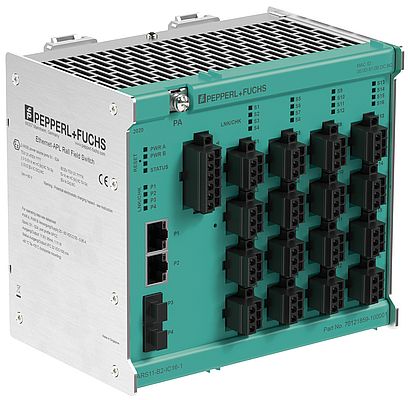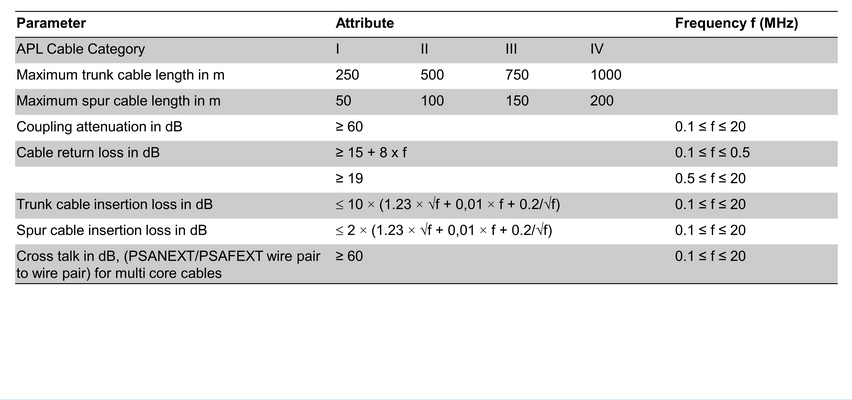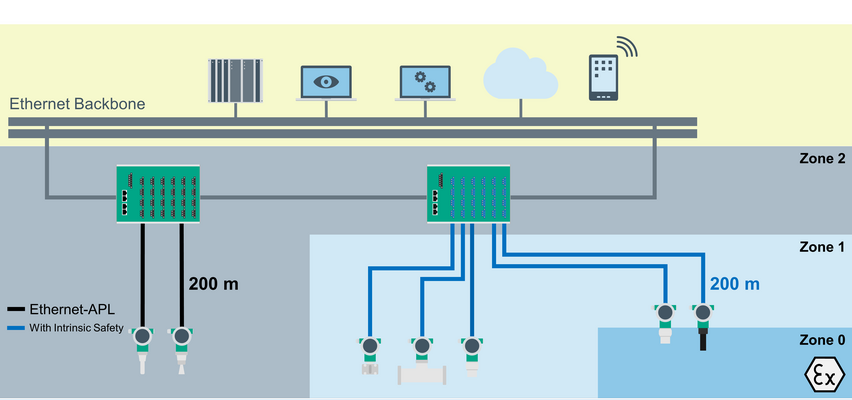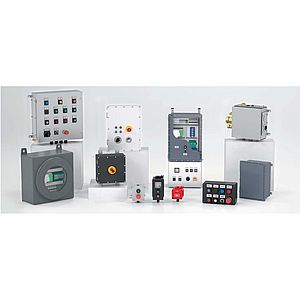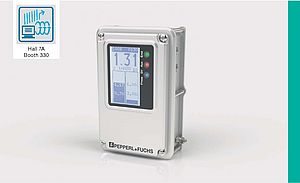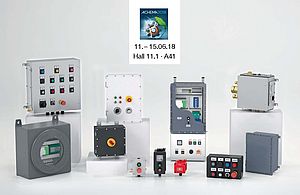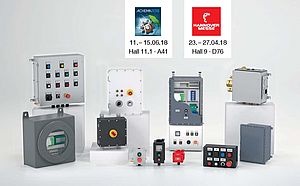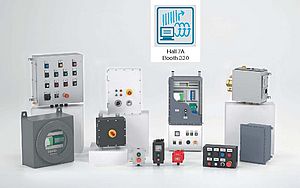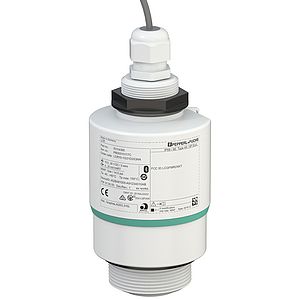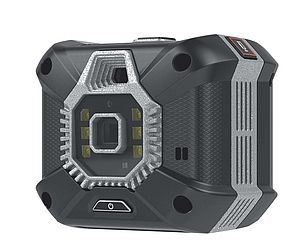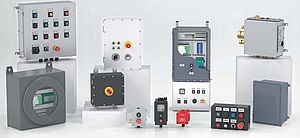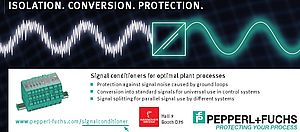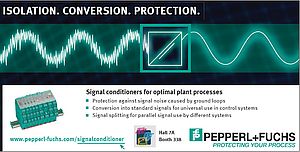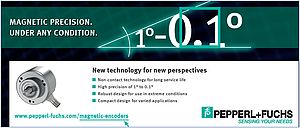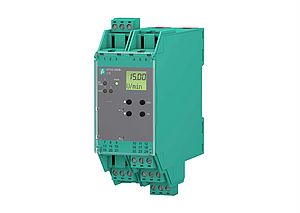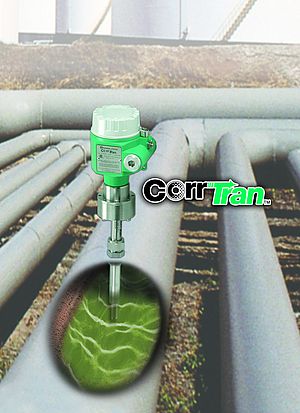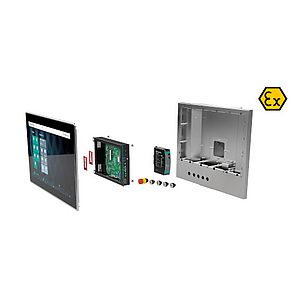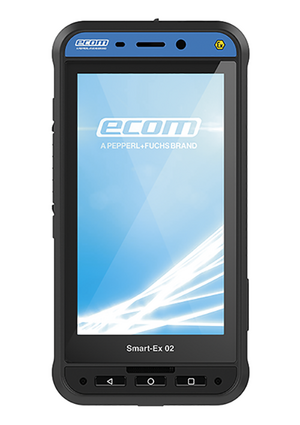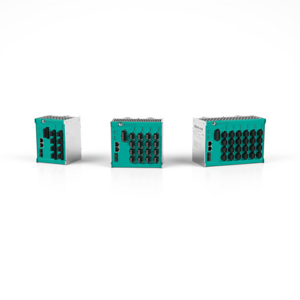Re-use of cable, reachable cable lengths, hazardous area protection with intrinsic safety, tools for easy access and configuration of the instrumentation? This articles provides insights how to bring Ethernet to the field within process plants. Complete details and best practices can be found in the Ethernet-APL Engineering Guideline, written and maintained by a working group of experienced industry professionals. To get the full details now, download the guideline in full from the technology pages at www.pepperl-fuchs.com/apl-tec
Bandwidth power and the cable
Bandwidth is the key enabler with 10 Mbit/s: Radar curves can update every 2 seconds providing expedience particularly during time critical phases such as commissioning tank sensor equipment. The asset management benefits from bandwidth, too. It can automatically download, keep and restore exact backups of instrument configurations, which in turn controls risk of human error during instrument exchange.
Power supply is engineered, requiring the planner to match switch output levels to instrument input levels. To assist this selection process, Ethernet-APL defines standard power levels for e.g. intrinsically safe instrument connections such as Ex ic IIC for Zone 2/Div. 2 or Ex ia IIC for Zone 0 or 1/Div. 1 respectively. Engineering benefits from simplicity ensuring interoperability between instruments and switches of any vendor.
Selections for cable infrastructure are critical as changes at a later time are typically cost prohibitive. Table 1 is taken from the guideline and shows parameters standardized for Ethernet-APL and compatible with fieldbus communications technologies. Thus planners and operators do good, specifying parameters that meet the needs of their plant. To achieve reliable communication, the standards prescribe two-wire cable type ‘A’ with shield.
Checking the cable for compatibility with specifications is good business sense. It is highly recommended to do this check when cables are to be re-used for upgrades to an Ethernet network. Standard test equipment provides certainty about conformance and thus eliminates the associated risks. This testing is a skill that is new to installers and that can be learnt from their colleagues in the office environment. It is much simpler though, as Ethernet-APL runs on two wires – not four or eight.
Because users would very much appreciate the savings of re-using installed two-wire cable, a vendor demonstrated 10 MB communication even over a simple, unshielded twisted-pair cable in a laboratory setting. The experts strongly discourage this as it is bound to cause long-term stability issues, particularly with unshielded cable, where communication is not protected from crosstalk and other EMI. This is one of the lessons learned from fieldbus for which even multi-core cable is permitted. More than 30 years of practical experience have proven that day-to-day operations run with optimum reliability in this highly demanding environment with individually shielded type ‘A’ cable.
Point to point to every instrument
Ethernet-APL field switches provide instrument connections according to the spur definition of the standard. This means point-to-point connections to the instrument with cable lengths of up to 200 m and optional intrinsic safety. Requiring auxiliary power, the field switch can be installed near or in the same junction box, that houses remote IO systems and use the same home run cable, which can be standard Ethernet for smaller plants or fiber optics for distances of up to 2000 m between control room and junction box. Switches will support media redundancy concepts applicable to standard Ethernet such as the media redundancy protocol (MRP) that is also adopted for Profinet.
Ethernet-APL rail field switches from Field-Connex can be installed in Zone 2 and come with choices of ruggedized enclosures for installation close to the instrument. They require external power and can be placed close to existing Remote IO stations. With point to point connections only, the switch segments power and communication. Such a topology is simple by design and thus easy to operate and maintain. The network infrastructure is very resilient to disturbances even during connect and disconnect operations often required during maintenance work or device exchange.
Consider this scenario: When the installer attaches an instrument to the network, it automatically powers up. Higher level protocols feature automatic device recognition and port identification so that asset management systems can detect the exchange of the device. Thus the system can now indicate this to the maintainer and automatically ask permission to restore the configuration to the replacement instrument.
Point-to-point connections, neighborhood detection and rugged connectors provide a user experience that surpasses even that of two-wire analog systems. This reliability and simplicity that users expect reduces systematic risk.
Access to any instruments via profiles
The long service life of process plants demands solutions that enable peaceful coexistence of multiple generations of instrumentation technology on a common network infrastructure. Ethernet provides the basis and protocols enable engineering no matter what the data source is.
Users can chose to mix and match Profibus PA and Profinet technologies for instrument communications and even operate them on the same infrastructure with similar concepts for power, communication, and explosion protection. This reduces risk for first adopters while instrument vendors are just beginning to roll out their product portfolios. Dual-purpose ports can automatically detect what type of instrument is connected.
The instruments and controllers provide a compatibility mode in Profibus and Profinet technologies called PA Profile. This is defined as a single device description or package, which ships with the controller, network component and instruments. Users configure all multiple measurements per instrument in the same way independent of make, model or size of a particular instrument. For example: A pressure transmitter provides pressure and media temperature the same way independent of the vendor. This is highly recommended for the 80 % of standard measurements or controls. The search for device drivers and troubleshooting of compatibility issues is over for good.
Complementing this setup of digital communications are the ruggedized LB/FB Remote IO systems for installation in hazardous areas. The remote IO connects to the same backbone and provides access to modern-day instrumentation with 4-20 mA interface where needed. In addition to the principle measurement value, the remote IO station can translate health and diagnostic data, secondary measurement values or historical data traces from HART to the Ethernet-based protocol of choice. This access is as fast as it can get, as the Remote IO utilizes individual HART masters per instrument and thus eliminates bus cycle times.
Conclusions
Ethernet-based communication via standardized protocols such as Profinet, EtherNet I/P, OPC-UA and HART-IP provides access to the intelligence already located at the edge: the sensors and actuators installed in plants today. Users can harness this data from any process plant and without constraints to improve efficiency of standard operating procedures, turning from reactive to predictive plant upkeep. Now they can easily deploy modern-day monitoring and optimization methodology.
To enable deployment of a future-proof network infrastructure while mitigating risk users should:
- Evaluate Ethernet-APL as their main infrastructure.
- Deploy fieldbus systems utilizing profile-style data representation.
- Test existing cable for re-use with Ethernet-APL.
- Choose cable conformant to Ethernet-APL specifications.
This keeps options open for future enhancements and expansions. The Ethernet-APL Engineering Guideline provides expert knowledge including case studies and best practices for planning, installation and operation of Ethernet-APL networks.
For greenfield plants to be built today, engineers should evaluate. Switches combine well with remote IO systems enabling connections to any instrument type. Type ‘A’ cable should conform to the specifications for Ethernet-APL. With Ethernet-APL new to the markets, devices not yet available can be fitted with fieldbus technologies. Profile-based communications enable operation and instrument exchange as simple as users know it from 4-20 mA – actually even simpler, without the need for PV scaling or setting instrument addresses. This provides for a future proof infrastructure that can be upgraded at any time.


